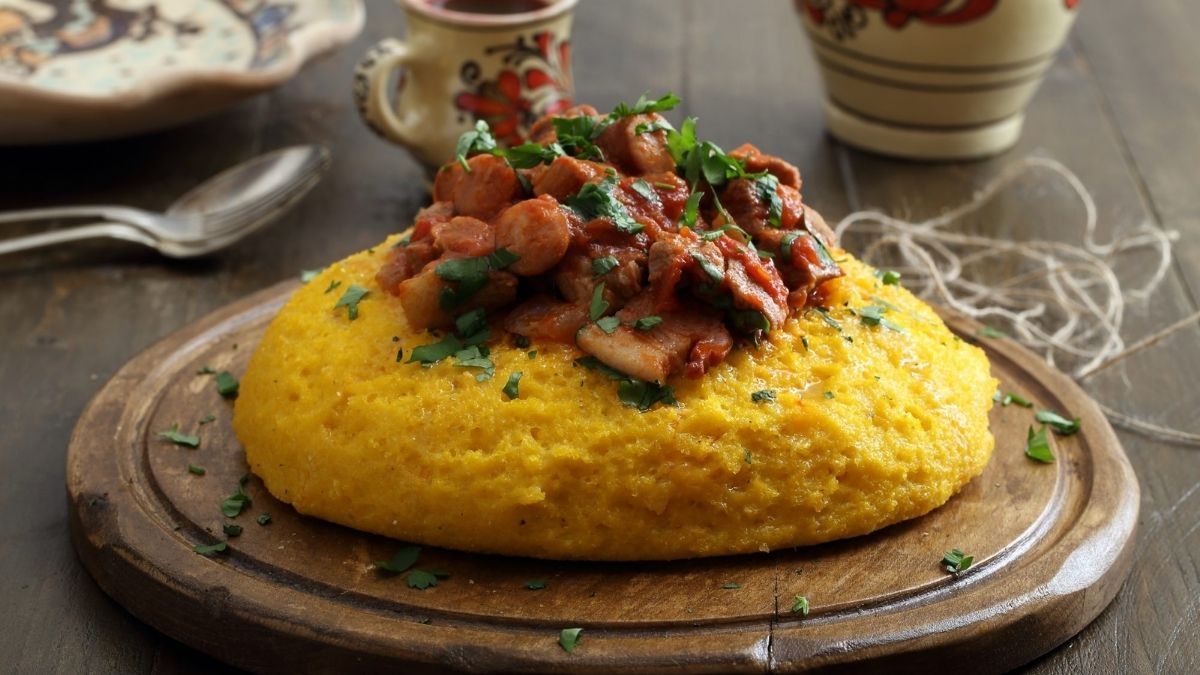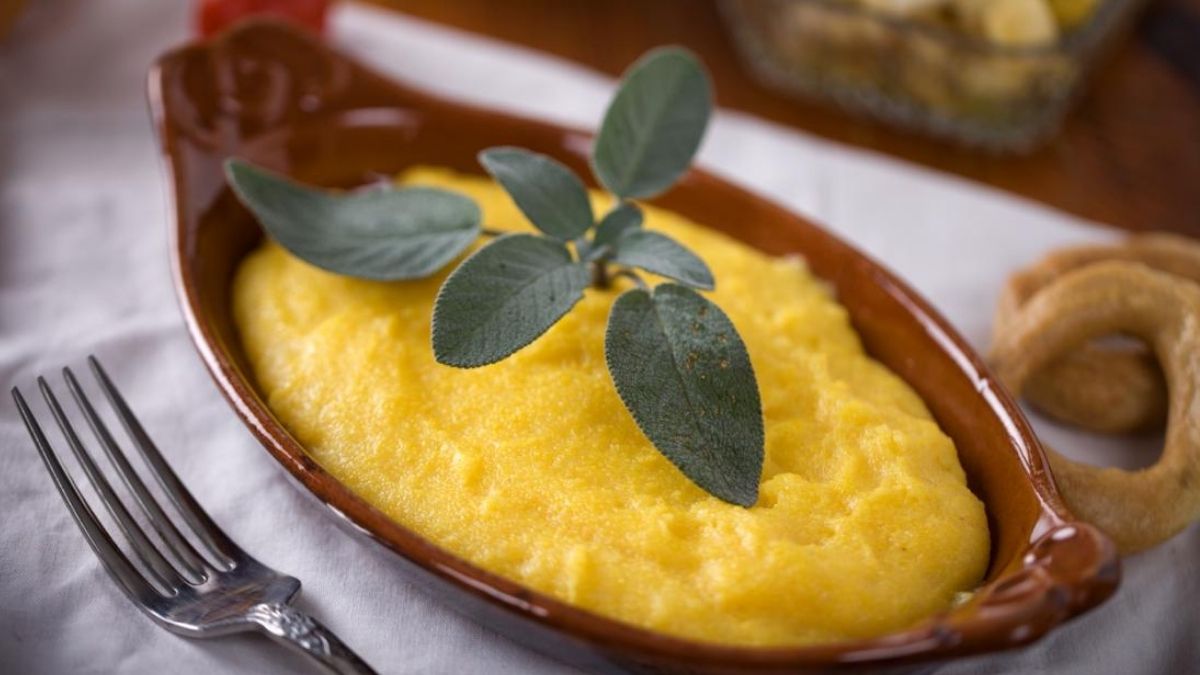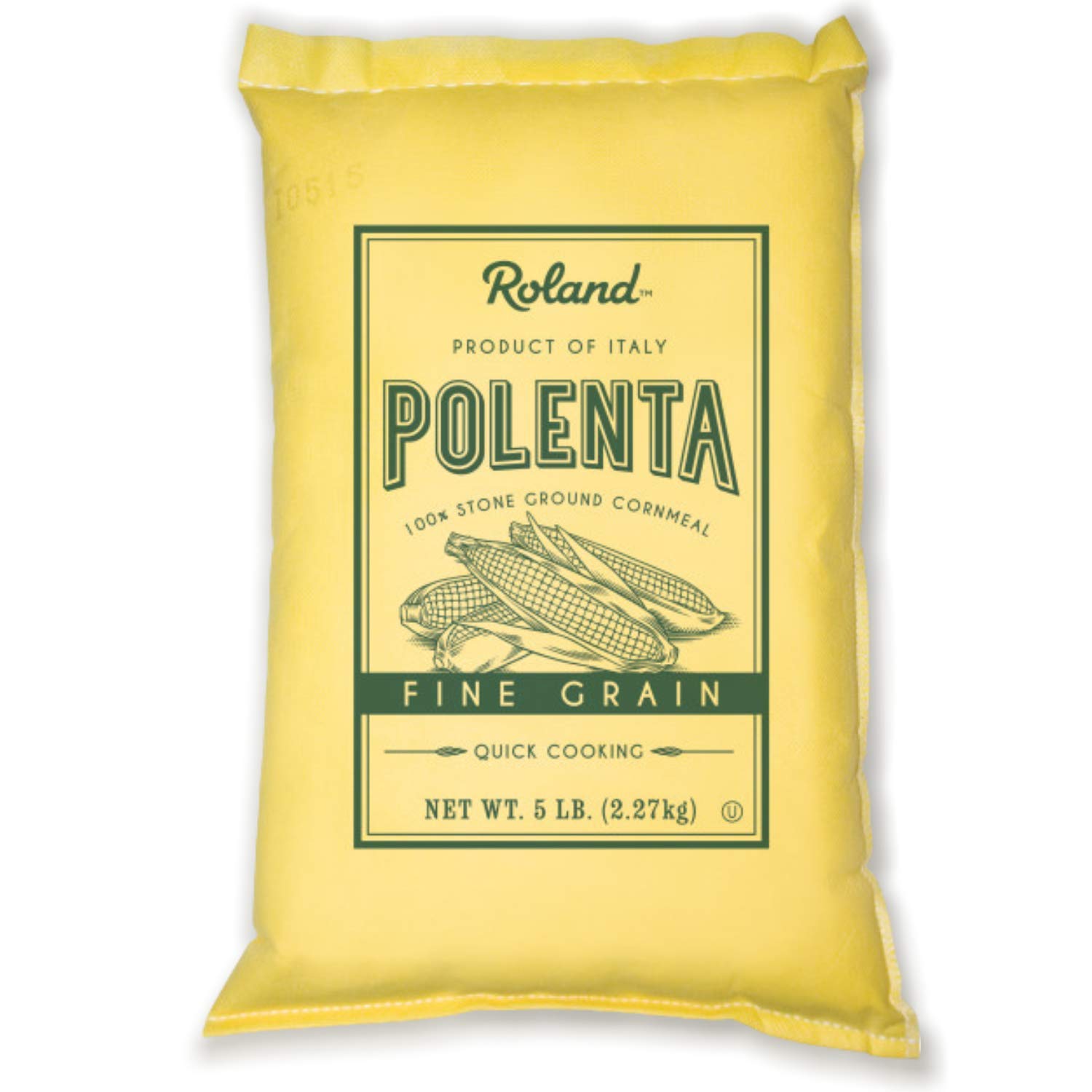Polenta is a mush or porridge made from cornmeal that originated as a peasant cuisine in Northern Italy. Although it isn’t very well-known in the United States, it is a staple that many Italian Americans consider part of their culture. Though coarse yellow cornmeal is most commonly used, it can also be made with finely ground yellow or white cornmeal. Traditional recipes demand slow cooking in water or broth, though much of the time can be done without supervision. The usage of instant or precooked it is a modern shortcut. It is typically served as a mushy, thick mush with sauce, a robust ragoût, or cheese on top. Cooked it can be cut into wedges, rounds, or other shapes and baked, grilled, or pan-fried after cooling until firm.
It is a hearty starch made from boiling cornmeal (from maize). The primary ingredient in polenta is yellow maize, although it can also be made with buckwheat or white maize and combined in some situations. The dish has a gritty, fine texture thanks to a base of dried maize kernels that have been stone ground. It’s made from flint corn, a type of corn native to Italy that’s a little heartier than other ears, giving it a highly gratifying base for polenta that lends itself nicely to various additions and flavors.
What is It?
It is a boiling cornmeal-based delicacy. Cornmeal is typically made from yellow maize, but buckwheat and white maize and mixtures of the three are also common. Other starches such as farro, chestnut flour, millet, spelled, and chickpea flour were used before corn was introduced in the 16th century. To produce it, the grain is slowly cooked in four to five times the amount of water until the water has been absorbed and the starch has gelatinized evenly throughout the polenta. It is a cornmeal porridge that originated among Northern Italian farmers. It’s now a common sight on many Italian American tables and Italian and modern American restaurant menus.
It is also included as an ingredient, and the phrase is frequently interchanged with cornmeal in recipes. It is cornmeal produced from flint corn that has been pulverized, and it’s usually coarsely ground yellow corn, but finely ground yellow or white corn can also be used. You can get quick-cooking polenta and pre-cooked variations like instant polenta (which you prepare by rehydrating it with boiling water) or pre-made polenta marketed in tubes in addition to products labeled “polenta.”
What are the Varieties of It?
Like oatmeal or rice, It is adaptable and can be eaten in various ways at any time of day. It might feel like an elegant dinner or just a simple lunch depending on what’s added to it and how it’s presented. There are various sorts of it depending on how the dish is prepared:
- Coarse ground polenta
- Finely ground polenta
- Instant polenta
- White polenta
- Precooked (tube) polenta
How to Make It?
It is created by boiling coarsely ground cornmeal in water at four to five cornmeal to water. Look for packets that say it or coarse-ground cornmeal on the label. The following are the fundamental stovetop steps:
- Bring four or five parts of salted water to a boil. You can use broth instead of water or replace some water with milk for additional flavor.
- Add one part of cornmeal and reduce the water to a simmer.
- Stir the polenta occasionally until the water has been absorbed and the polenta reaches a smooth consistency, about 45 minutes.
- You can stir in butter or cheese at the end for additional richness and creaminess if you’d like.
It can alternatively be baked in the oven for a more hands-off method.
Excellent cooked polenta before cutting it into wedges, squares, or rounds, which can be baked, grilled or pan-fried. You may also buy pre-made polenta in a tube, which you can slice into rounds to bake, broil, or pan-fry.
What are the Uses of It?
It is prepared in various ways depending on the day it is served.
- Serve soft polenta, either plain or with herbs or cheese, as a side dish.
- Use polenta as the base for the vegetarian main dish, topped with sauce or a hearty vegetable ragoût.
- Serve polenta instead of pasta or rice as an accompaniment to meat sauces, stews, or chilies.
- Try soft-cooked polenta as a hot breakfast cereal, topped with fresh or dried fruit, nuts, cinnamon, and milk.
- Use baked or grilled polenta rounds as a base for hors-d’oeuvres or appetizers.
- Use precooked or homemade polenta in casseroles.
- Use polenta to replace the biscuit or puff pastry topping on pot pies.
Yellow Polenta
100% Stone ground cornmeal: Our 100% stone-ground cornmeal yellow polenta is simple, humble, and healthy
Sweet and tangy: Polenta has a lightly sweet and tangy flavor that pairs well with both meat and vegetables
quick-cooking: Our Fine Yellow Polenta is fast cooking in 6-8 minutes; pour into salted boiling water and stir continuously to avoid lumps
gluten-free, vegan FREE, vegetarian, and kosher: Roland Food’s Yellow Polenta is a gluten-free, vegan, vegetarian, and kosher ingredient
What is Polenta Served with?
Breakfast can be served with it. Serve it as porridge with toppings like dried or fresh fruit, nuts, milk or nut milk, and honey or maple syrup, just like oatmeal or other warm breakfast cereals. Make a polenta breakfast dish with a runny yolk egg, and butter for a savory option.
It’s a quick side dish, especially when seasoned with cheese, like these weeknight-friendly Turkey Meatballs with Cheesy Polenta or herbs. This fragrant Rosemary Polenta is perfect for serving alongside roasted pork chops or chicken. It is a fantastic base for saucy meals like Spicy Braised Short Ribs with Polenta or Slow-Cooker Beef with Polenta because of its neutral flavor. Serve polenta with stews, chili, and ragouts that would usually be served with rice or pasta. Grilled polenta rounds complement grilled dishes like Grilled Salmon and Polenta and Grilled Shrimp and Polenta.
What does Polenta Taste Like?
It has a hearty maize porridge flavor. The cooked grains should have a sweet, cooked flavor rather than a bitter, raw flavor. The more quality cornmeal you use at the start, the better your polenta will taste. Polenta tastes like maize because it’s made from corn, although usually mild. Because of its neutral flavor, the character quickly absorbs various flavors such as broth, milk, butter, or cheese while cooking.
The flavor profile of polenta is highly gratifying, with a sweet maize flavor and a porridge-like texture and consistency. A bowl of grits with a flavor pop of cornbread is a similar comparison. The mouth feel is different because it is made from flint corn, which is less creamy than its distant cousin grits.
Where to Buy It?
It is ground cornmeal, so seek at your grocery store for either packaged polenta or ground cornmeal. It’s usually found in the baking section, boxes, or bags and costs less than $5. Cooked polenta tubes in tubes are also readily available, and they usually come in a 16-ounce package and are less than $5. These can be cut into slices and fried or baked. Purchasing a large quantity of ground cornmeal from a club or restaurant supply store is best to buy in bulk.
Conclusion
It is a simple dish to prepare. Bring a pot of salted water to a boil, then slowly whisk in the polenta and cook for 45 minutes, stirring every 10 minutes. Due to the long cooking period and stirring, the grains will swell and become cooked. It can be topped with anything from meaty ragu to a poached egg, fruit, or butter once it’s been prepared. As a result, polenta, like American grits, is a highly adaptable food that may be served at any time of day. Depending on the meal you’re creating, you’ll be able to choose from five different types of polenta: coarse ground, finely ground, instant, white, or precooked.
It is low in calories and fat, making it an excellent choice for anyone looking to reduce or maintain a healthy weight. We can eat it as is or make it using the recipes provided above. Let us substitute calorie foods with it and other options for a healthier lifestyle. It’s main component, cornmeal, is gluten-free, but if you have gluten sensitivities or celiac disease, be sure it’s produced and packed in a specialized gluten-free facility. It can be used instead of potatoes or rice for lunch or dinner, and toppings for baked potatoes can be added to the polenta. Combine goat or feta cheese, sundried tomatoes, and fresh basil in polenta. Serve Mediterranean Polenta Rounds or Truffled Roasted Mushrooms on Garlic Polenta as an appetizer.



